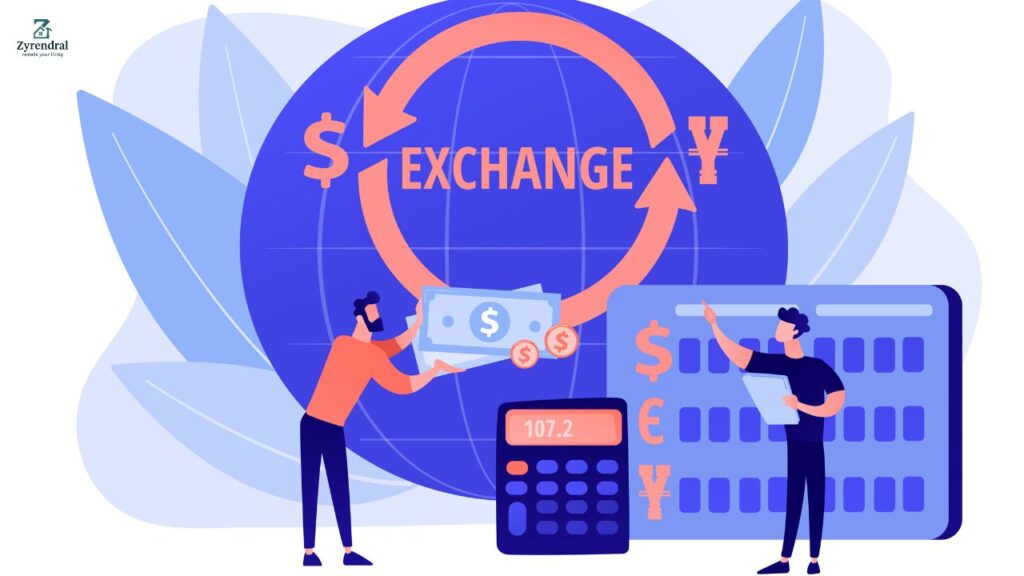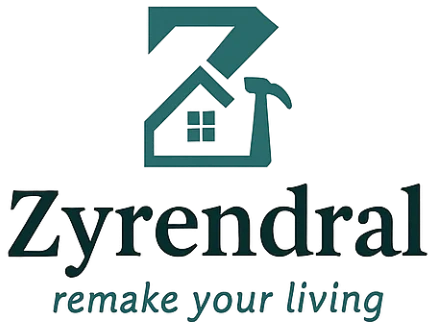When it comes to swapping real estate or financial assets without triggering tax consequences, 1035 real estate exchange stand out as a valuable option for investors and policyholders. If you’re looking to defer taxes while achieving financial goals, understanding the principles and mechanics of a 1035 real estate exchange is essential.
This guide will break down everything you need to know about 1035 real estate exchanges, from their benefits and rules to actionable steps and real-world examples. Whether you’re a seasoned investor or new to tax-efficient strategies, this is the definitive resource to help you make informed decisions.
Table of Contents
ToggleKey Information About 1035 Real Estate Exchanges
The table below summarises the most crucial details about 1035 real estate exchanges to give you a quick understanding at a glance.
| Feature | Description |
|---|---|
| Purpose | Allows taxpayers to swap insurance policies, annuities, or endowments without immediate tax liability. |
| Eligible Assets | Life insurance policies, annuities, endowment contracts, and certain financial products. |
| Tax Impact | Gains are deferred and not recognised at the time of exchange. |
| Like-Kind Requirement | The exchanged products must have a similar purpose (e.g., life insurance for life insurance or annuity). |
| Primary Advantage | Preserves tax-deferred benefits while switching to a policy or product better suited to current needs. |
| Common Uses | Improving investment performance, managing tax liabilities, or restructuring financial portfolios. |
| Owner Requirement | The owner of the original and new contracts must remain the same. |
| Processing Time | Typically completed within 30–45 days, depending on the exchanging institutions. |
What Is a 1035 Real Estate Exchange?

A 1035 exchange, named after Section 1035 of the Internal Revenue Code, allows individuals to swap one insurance policy or annuity for another without incurring immediate taxes on any gains. Originally tailored for financial products like life insurance, annuities, and endowment policies, it provides an avenue to restructure contracts while preserving their tax advantages.
Though it’s named similarly to a 1031 real estate exchange, 1035 exchanges differ significantly in scope and applicability. While 1031 exchanges focus on real estate, 1035 exchanges cater to financial and insurance products.
For example, individuals may utilise a 1035 exchange to replace an outdated life insurance policy with one offering better terms or to restructure an annuity for improved retirement benefits.
Key Characteristics of 1035 Exchanges
- Tax Deferral: Keeps the capital appreciation within the policy or annuity tax-deferred.
- Flexibility: Enables investors to adapt to new financial needs or opportunities without being penalised.
- Direct Transfers: Mandates exchanges to occur directly between institutions.
Benefits and Limitations of 1035 Exchanges

Benefits
- Tax Deferrals
1035 exchanges ensure the accumulated gains in your initial policy aren’t taxed during the transfer process. This safeguards your wealth and maximises future compounding returns.
- Improved Products
Replace outdated insurance policies or annuities with more tailored or feature-rich offerings—including more competitive rates or additional riders like long-term care benefits.
- Estate Planning Simplification
For individuals utilising financial vehicles as part of wealth or estate planning, consolidating products through a 1035 exchange can simplify management while maintaining benefits.
- No Immediate Tax Liability
Gains rolled over into a newer product remain tax-deferred, offering peace of mind and avoiding upfront payment penalties.
Limitations
- Surrender Charges
Exiting your existing policy or contract early can trigger surrender fees, making the exchange less valuable in the short term.
- Strict Ownership Rules
The original and replacement contracts must have identical ownership for the transaction to qualify.
- Complex Regulatory Parameters
Certain asset classes are excluded, such as real estate or tangible personal property, which limits its scope compared to other exchange mechanisms.
- Not Cash-Accessible
Receiving any cash during the exchange process nullifies the qualification, as funds must directly transfer to the new institution.
Comparison of 1035 and 1031 Exchanges

While 1035 exchanges cater to insurance and financial products, 1031 exchanges are exclusive to real estate transactions. Here’s a quick side-by-side comparison:
| Feature | 1031 Exchange | 1035 Exchange |
|---|---|---|
| Purpose | Tax deferral on real estate gains. | Tax deferral on insurance/annuity gains. |
| Eligible Assets | Real property like commercial or investment estates. | Life insurance, annuities, and endowment policies. |
| Timeline | 45 days to identify, 180 days to complete. | No rigid timeline, but typically processed within 30–45 days. |
| Ownership Flexibility | Allows certain entity transfers like LLCs. | Ownership must stay identical between products. |
| Tax Treatment | Deferral of capital gains taxes on property. | Deferral of gains within financial policies. |
Eligibility Criteria and Rules for 1035 Exchanges
Before proceeding with a 1035 exchange, ensure you meet these eligibility requirements:
- Like-Kind Assets
Only like-kind exchanges are permissible. Examples include swapping life insurance for life insurance or an annuity for annuity. Non-reversible exchanges such as annuities into life insurance are disallowed.
- Ownership Stability
The ownership of the policy or contract shouldn’t change during the exchange.
- Direct Transfer
Funds must be directly transferred between insurers or annuity providers without intermediary cash withdrawals.
- Endowment Products
Endowments nearing payout eligibility are only exchangeable under specific constraints outlined by IRS regulations.
Step-By-Step Process for a 1035 Exchange
- Assess Your Current Policy
Review the terms, benefits, and liabilities of your existing policy or annuity. Include elements like gain status, surrender fees, or interest rates.
- Research New Products
Seek competitive replacement policies or contracts that meet your evolving needs.
- Engage Professionals
Consult financial planners or tax advisory experts to ensure compliance with 1035 regulations.
- Initiate the Exchange
Work directly with your institution to complete appropriate forms and request transfer documentation.
- Complete the Transfer
Monitor the process to ensure funds are transferred within the set timeline without triggering taxable events.
Real-Life Examples and Case Studies
Case Study 1: Policy Refresh for Better Rates
A policyholder with a 15-year-old life insurance policy sought more comprehensive long-term care benefits. By utilising a 1035 exchange, they upgraded to a policy with living benefits while maintaining tax deferrals.
Case Study 2: Higher Annuity Returns
An individual nearing retirement switched from a fixed annuity offering low returns to a variable annuity with high-growth potential using a 1035 exchange.
Common Pitfalls and How to Avoid Them
- Failing to Check Surrender Fees
Always review exit costs beforehand to measure if they outweigh exchange benefits.
- Improper Documentation
Failing to comply with paperwork or submission protocols can lead to disqualification.
- Switching Between Asset Classes
Ensure the products you swap meet like-kind criteria; for example, moving from life insurance to annuities has limited scenarios.
- Skipping Professional Advice
Mistakes often stem from self-handling without the aid of financial professionals. Avoid cutting corners—consult experts.
FAQs About 1035 Real Estate Exchanges
Q1. What can you exchange under a 1035 exchange?
A1. Eligible products include life insurance policies, annuities, endowment contracts, and long-term care insurance.
Q2. Are there specific timelines for completing a 1035 exchange?
A2. Unlike 1031 exchanges, no rigid timeline exists, but processes typically finalise within 30–45 days.
Q3. Can I exchange an annuity for life insurance under a 1035 exchange?
A3. No, IRS rules prohibit swapping annuities into life insurance policies.
Q4. Do 1035 exchanges avoid taxes entirely?
A4. No, taxes aren’t waived—just deferred until you liquidate or cash out the exchanged policy.
Q5. Why must ownership stay the same?
A5. This restriction prevents individuals from avoiding taxation by transferring assets to another party during the exchange.
Conclusion
1035 real estate exchanges are a strategic tool for those looking to improve their financial portfolios without incurring immediate tax liabilities. By understanding the rules, benefits, and potential pitfalls, you can confidently utilise this IRS-provisioned strategy to adapt to changing financial needs. Always consult professionals to ensure compliance and maximise your exchange benefits. Take the next step by assessing your policies today and exploring opportunities for beneficial upgrades.
Admin Recommendations
The Future of Real Estate Investment Made Easy with Online Appointments Invest1Now.com Real Estate
Montecito Country Club Easement Dispute: Understanding the Conflict and Its Implications
Money6x.com Save Money – Your Ultimate Guide to Financial Success







